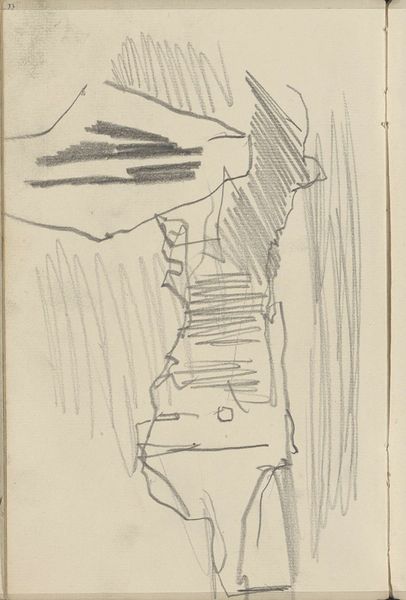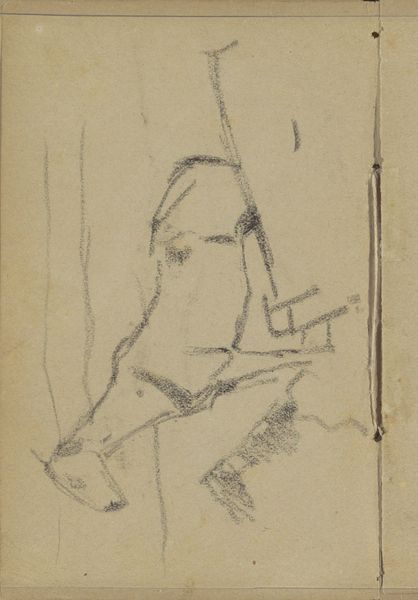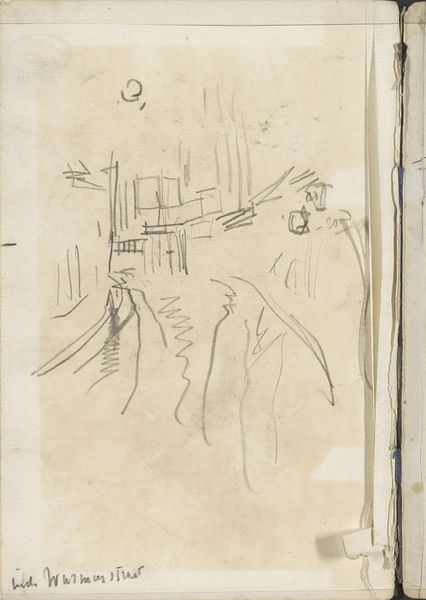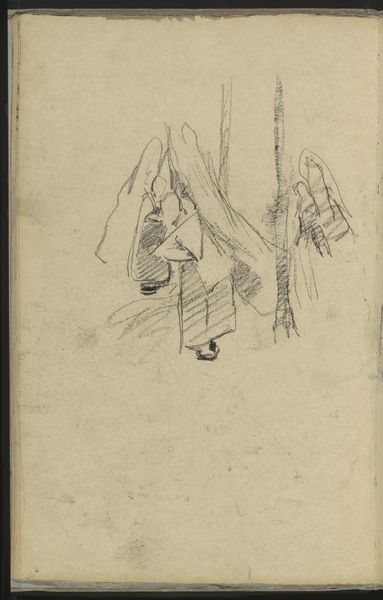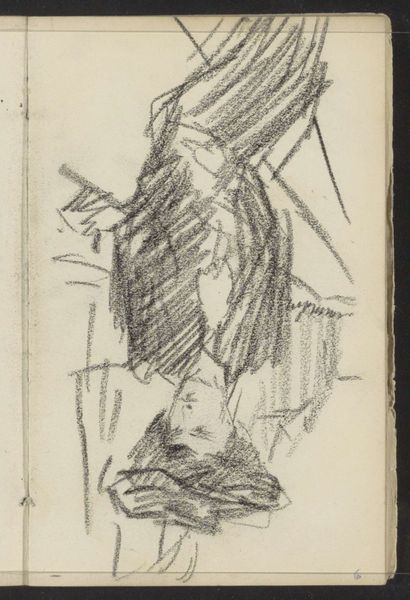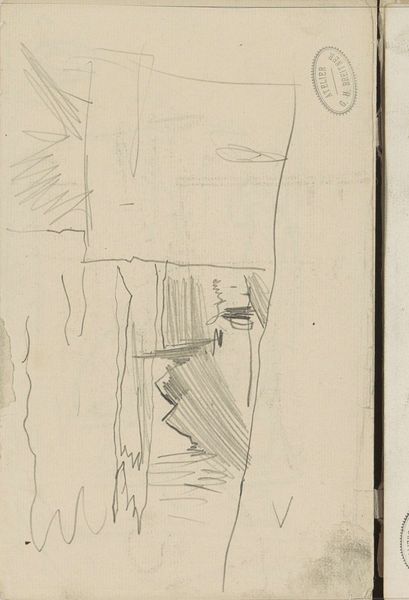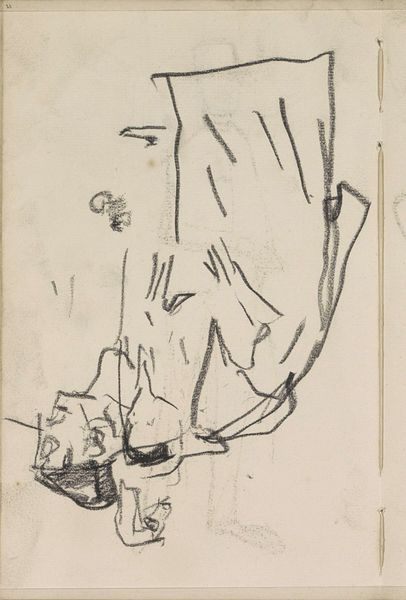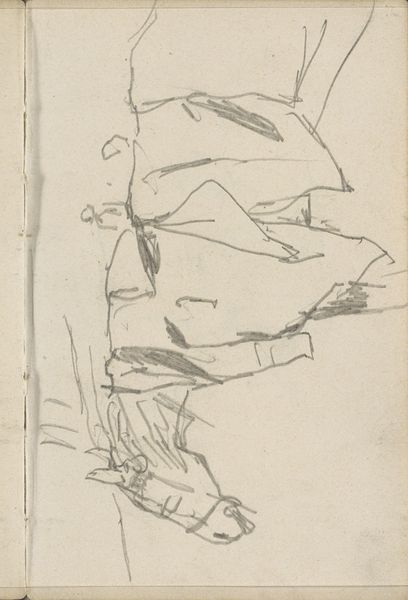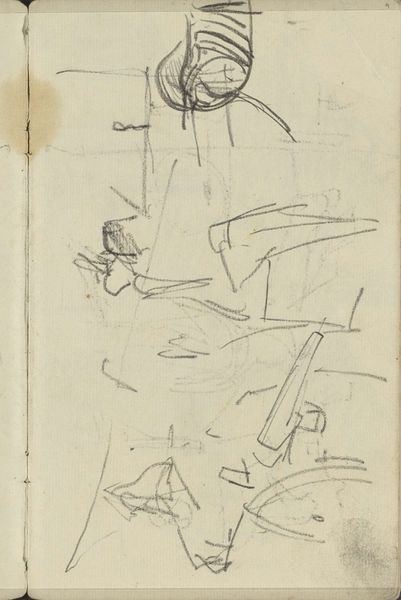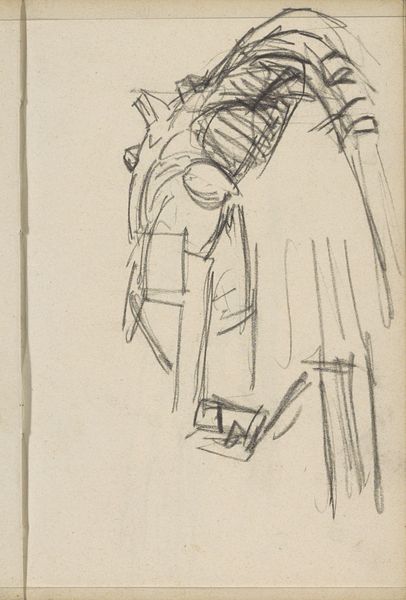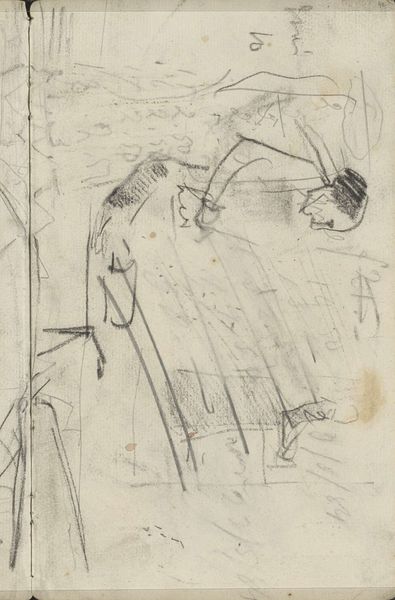
drawing, paper, pencil
#
drawing
#
impressionism
#
landscape
#
figuration
#
paper
#
pencil
Copyright: Rijks Museum: Open Domain
Editor: This is "Studie, mogelijk van een aangemeerd schip," or "Study, possibly of a moored ship," by George Hendrik Breitner, from around 1884 to 1886. It's a pencil drawing on paper. The loose lines create a feeling of transience. What stands out to you about this drawing? Curator: The sketch offers a glimpse into Amsterdam's harbor. In the late 19th century, harbors were intensely vibrant and masculine spaces but were also sites of exploitative labor. This image doesn’t romanticize maritime life, does it? Instead, the focus on what seems like infrastructure hints at a socioeconomic commentary. What narratives do you think Breitner subtly includes, or maybe obscures, in this portrayal? Editor: I see what you mean. The sketch emphasizes the structure of the ship rather than any human activity around it. Maybe that was intentional? Curator: Precisely. It moves beyond merely documenting. We should think about this in light of contemporary social and political movements and urban life—specifically the swell of the working class and labor disputes. Could the ship represent, even symbolically, the economic forces at play? Is Breitner advocating for the forgotten workers obscured in this imagery? Editor: So, you're saying it could be read as a statement about the social realities of the time, less about the ship itself, and more about what it represents? Curator: Exactly! The visual choices reflect contemporary discussions around labor, urbanization, and industrial power. Consider how those dense, scribbled areas might mirror societal turmoil as the working class faced increased oppression in late 19th-century urban society. Editor: I had been mainly looking at it formally, but your approach opens it up to much broader discussions. Curator: Art is always speaking, though, isn't it? We just have to learn to listen to all its voices.
Comments
No comments
Be the first to comment and join the conversation on the ultimate creative platform.

